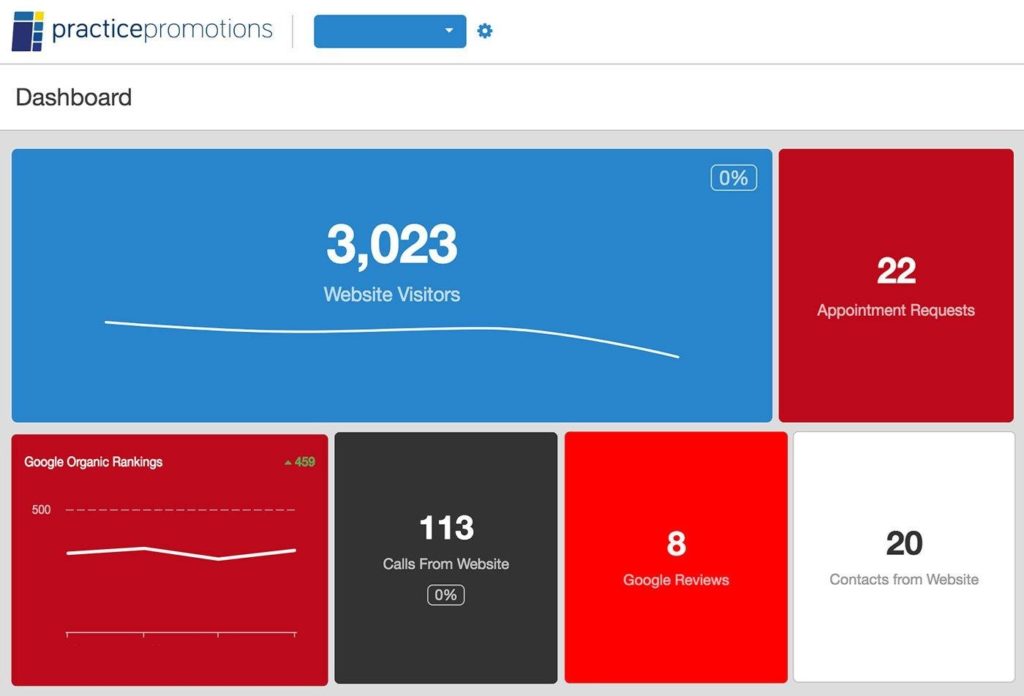Imagine if thousands of people walked by the front of your clinic every day, but never came in. This is exactly what happens if your website is not set up correctly for your Physiotherapy clinic.
Whether you’re starting from scratch or updating an old site, it’s important to the success of your clinic to have a solid plan in place before going live. In today’s world, the opportunity to drive new patients online is bigger than ever – and I see clinics doing it every day!
That said, there are also traps out there that could threaten your success. A website can be a large investment, so it’s important to avoid a couple of common website setup mistakes.
Here are 7 pitfalls from my personal experience both as a practice owner and working with other clinics (and what you can do instead):
7 Fatal PT Website Setup Flaws:
1. Creating a Website Without Future Support
I call this the Kevin Costner Delusion… “if you build it, they will come”. It certainly didn’t apply when you opened your clinic, and it doesn’t apply to a website either. Unfortunately, we still talk to a lot of PT Owners who have been let down by a flashy web designer whose site looked great, but isn’t converting visitors to new patients.
Having a great looking website is one thing, but it must convert people into interested patients, and it must be highly discovered in your community. Otherwise, it is like having a beautiful billboard, that is stuck out in the desert, instead of next to the highway.
Marketing your website takes planning, the right tools, and adjustments over time, as you discover more about what is or isn’t working. Paying a bunch of money for a one-time website setup while expecting results to last for years is one of the most expensive mistakes I’ve ever seen.
What To Do Instead:
It’s not a bad idea to treat your website like an employee. A living, adapting asset that takes some setup costs but will generate monthly results if you continuously invest in their continuing education and training. Choosing a website company who can also provide monthly digital marketing services almost always leads to more steady, reliable results and will typically require less investment in the actual design phase.
2. Listing Conditions You Treat On The Homepage
A common mistake I often see is a website that just has one page for services provided and conditions treated. People need to know what you can help them with, but (and I’ll touch on this more in point 7 below)… a list of conditions on a single page doesn’t get your website discovered online.
Each condition you treat is an opportunity to appear in a different search or connect with a different prospect on google, Facebook, etc. But when you have a chance to connect with someone suffering from back pain, it would be a mistake not to give them information about that specific topic instead of 15 topics.
What To Do Instead:
Put the conditions you treat in a menu and have a dedicated page for each one. On the page, you can (and should) include specific images, advice or basic exercise examples, and finally a strong call-to-action to book an appointment to see how physiotherapy will help that condition. (Pro Tip, be sure to include at least 300-500 words).
These pages are fantastic for ranking on Google and build trust with people on an individual level.
3. Not Including A Blog
If a blog sounds like a lot of work, that’s exactly why so many practices fall into this fatal flaw. Not including a blog in your website setup means you’ll be missing a huge opportunity to get found by the thousands of people looking for help online – each one a potential new patient!
Blogs are proven to boost search rankings, build trust in prospects, and done well, they even convert website visitors into new appointments. It takes getting used to, but publishing even 1-2 blogs per month will make such a big difference in your marketing that it would be a big mistake not to.
What To Do Instead:
Include a blog. Even if you feel you don’t have time now, have it setup so you can use it soon. You could also consider hiring a website company that handles monthly blog posts for you like we do at Practice Promotions or paying for articles individually from an online blog service.
4. Google Analytics Missing Or Too Hard To Understand
Analytics are critical for practice owners – I probably don’t have to tell you that.
If you don’t know what’s working, you won’t be able to calculate return on investment or patient acquisition costs. It’s these numbers that help you make informed business decisions. If your website analytics aren’t accessible or are hard to understand, you will be at risk for making mistakes down the road.
What To Do Instead:
Talk about analytics with your web developer BEFORE you commit. Decide on Key Performance Indicators (KPI’s) and have them show you specifically how you will be able to get those reports.
Setting up tracking might be super technical, but you’re smart enough to read a report if the report is well made.
For example, here’s a screenshot of a online marketing dashboard. This shows the most important data in one place such as calls generated from the site, traffic, appointment requests, etc:
5. Unclear Which Button/Call-To-Action Is Most Important
A terrible mistake you can make is being unclear of telling the visitor on your website what you want them to do. You want to make it as plain as day for them to call you or schedule an appointment.
The top right of the screen is the most valuable area for calls to action. This is where you should place your most prominent button, ideally for scheduling an appointment.
There will always be more than one thing to click on a website but if a potential patient doesn’t clearly see the most important next step, then you risk losing them altogether.
Example: I’ve seen a lot of PT Websites where “Write a review” is the biggest button on the screen. Don’t get me wrong, reviews are important. But ideally 70% or more of visitors have never been patients, so why wouldn’t you show them first how to become one?
What To Do Instead:
Choose one call to action and prioritize it. Hopefully, in your case, that would be “Request an appointment” or “Book Consultation.” Next, make sure that button is in the main menu and is contrasting in color to most of the site.
If your logo and other things on the site are blue, make the button red/orange. If your site has a lot of green, try orange/purple. If your brand uses a lot of black and red, consider one green button.
Not every visitor will be ready to make an appointment but when they are, don’t make them search for it.
6. Ignoring The Mobile Experience (Of Every Page!)
It’s no secret that mobile traffic has surpassed desktop traffic now for a couple of years. In Canada, it specifically happened around 2014 and is only trending upwards.
In addition, Google announced in 2018 that their algorithm now determines site rankings based heavily on mobile experience (meaning speed, layout, etc). Because of this, ignoring mobile features could be a costly mistake.
What To Do Instead:
No matter what your patients’ age or demographic, it is vital to have a mobile-friendly website. If you’re planning a new site make sure the designer shows you mobile versions of everything in addition to the desktop design. Typically, you will remove some of the desktop content to provide a better experience on mobile.
Already have a site? Test your own site on your phone regularly – is it fast? Easy to read? Have someone else try to find how to contact you. How long does it take them? If your site doesn’t deliver an easy, clean, fast mobile experience you may need an upgrade.
7. No Plan To Rank Better On Google (SEO)
This ties back to my first point – just making a new website doesn’t get you found in Google searches. There are plenty of best practices you want to consider in the design phase of a website setup, but the bigger mistake I see practices make is not knowing what they want to rank on Google for, until after their site is done.
What To Do Instead:
Make an SEO plan with specific PT-related keywords you want to rank for before you setup a website. Talk with your developer about a plan to include pages for each, menu items (as mentioned in point 2), and properly placed links. Here are some keyword ideas to get you started.
The Primary Key PT Website Success:
The best thing you can do to succeed with your practice’s website is follow in the footsteps of successful clinics before you. I’ve seen a lot of mistakes, but I’ve also seen many practice owners experience the unmatched excitement of having doubled their monthly new patients 1 year or less after a website launch.
I highly recommend using a website company who specifically understands physiotherapy and has experience. Whatever you choose, take these tips as a guide, do your own research, then unlock the power of website marketing to change more lives in your practice – here’s to your success!
-Neil Trickett, PT
Physiotherapy Marketing Expert
CEO & Founder of Practice Promotions




